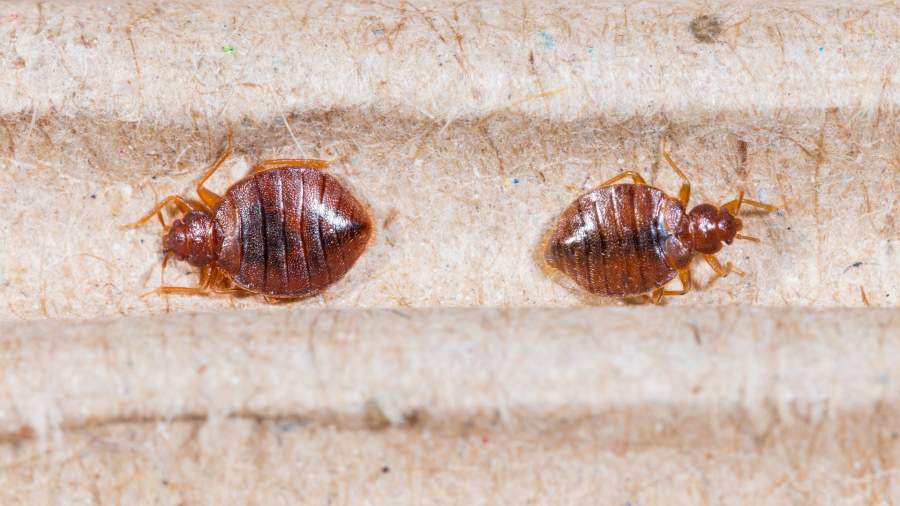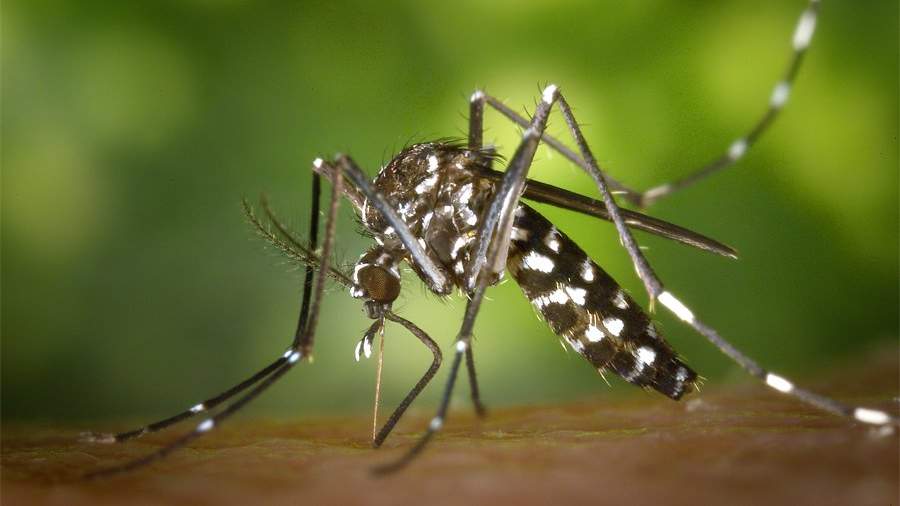Rospotrebnadzor reported that tropical species of bed bugs were seen in a number of Russian cities. Probably, tourists brought them to the country from hot countries, and the insects took root. There is nothing unexpected in this – “migrants” regularly appear in the country, some of whom may even pose a danger, for example, carry dengue and chikungunya fever. Izvestia understood the problem.
Table Of Contents
Attack in the afternoon
According to Rospotrebnadzor, tropical bed bugs have been spotted in a number of cities – this is a new species for the European part of the country, before the Russians dealt only with ordinary bed bugs. The number of their tropical counterparts in Russia is increasing every year. However, only specialists can distinguish them from each other.
The department notes that bedbugs can live in quite safe rooms with proper sanitary conditions. “If the pest got into at least one apartment, there is a risk of infection of the whole house,” the Rospotrebnadzor noted.
Most likely, the insect came to Russia with tourists. They are brought into apartments with things, clothes, furniture and bedbugs are carried from room to room, from house to house, from city to city. Insects are found even in five-star hotels. In this regard, Rospotrebnadzor recommends that when checking into a room, carefully examine the bed, without embarrassing the staff. It is recommended to keep suitcases and things in the bathroom or shower, as it is much more difficult for bugs to get into things on slippery surfaces.
They can crawl from apartment to apartment through ventilation channels, along the outer walls of houses in the warm season, and even through electrical outlets. You can pick it up in transport and in other crowded places. Tropical bugs have one feature that is not typical for local species: they can attack humans during the day.
“They were noticed back in 2014, when these bugs were found and described for the first time in St. Petersburg,” Svetlana Roslavtseva, head of the disinsection laboratory of the Research Institute of Disinfection of Rospotrebnadzor, Doctor of Biological Sciences, told Izvestia. – After that, they began to massively identify them in Moscow, found in Saratov, Smolensk, Gus-Khrustalny and in some other cities of the European part of Russia. Now we want to make a map of their distribution. “
However, according to Roslavtseva, tropical bugs do not pose any new danger – the same pathogens were found in them as in ordinary species. Measures to combat them are also similar: as explained in the press service of Rospotrebnadzor, to destroy insects and reduce their number, disinsection products that have passed state registration are used.
Small harmless business
At the same time, it is difficult to prevent the appearance of dangerous species of insects: it is not clear who and where will bring them. Tourists, planes, and sea transport could bring the same bugs. According to Roslavtseva, “the quarantine should work. It once existed, but in the nineties at least at the airports it was broken. ” Green aisles have appeared, where no one inspects the luggage and its guests.
Anatoly Zakharov, a leading researcher at IPEE RAS, agrees with Roslavtseva. He is convinced that in Soviet times, the epidemiological service and the quarantine service worked better and more effectively limited the number of insects entering our territory. “In times of troubles [систему карантина] destroyed and have not yet been restored. This means that there is practically no protection from external invasions, ”says the entomologist. He emphasizes that with the development of tourism, the situation has worsened.
Yuri Gninenko, associate professor of the Department of Agricultural Land Reclamation, Forestry and Land Management, Timiryazev Moscow Agricultural Academy, does not fully agree with this opinion. He points out that the efficiency of quarantine services has not decreased, but the intensity of travel has increased. “There was no globalization before,” Gninenko stresses. – And now people go wherever they want, they carry it, no one knows what. Each person wants to bring a flower, a fruit with him, thinking that this is such a nice little harmless thing. And there, it turns out, this fruit is full of insects that will scatter and eat everything here. The quarantine service is functioning, all cargoes are inspected, but you can’t get into a suitcase for every person “
However, all the experts interviewed emphasize that insect control problems exist not only in Russia. For example, Costa Rica reported in January that bed bugs were found there for the first time in at least 20 years. They associate it with tourism and migration. In France, bed bugs were eradicated in the 1950s, but in recent years have returned from tourism and have proliferated – especially in Paris – so much so that the government reportedly launched a national campaign against them in February. An emergency service has appeared that can be called at home in case of bed bugs.
In the United States, the Centers for Disease Control and Prevention monitors the spread of insects that carry dangerous diseases. However, a recent study by Kaiser health news (KHN) and The Associated Press showed that American epidemiologists had problems this year: there was no time left to track infections carried by insects due to the coronavirus. If in ordinary years, health departments, for example, set up traps for mosquitoes – carriers of fevers, now all employees are busy fighting the coronavirus.
It is noteworthy in this context that WHO even has a project “Global measures for vector control 2017–2030”. The project report says that many countries are still at risk of vector-borne diseases due to “insufficient vector control activities due to lack of investment.”
“There are many examples of outbreaks of disease being caused by weakening control programs, especially for malaria and dengue,” the WHO report says. The World Health Organization calls on, among other things, to look for new financial solutions to combat diseases that are carried by insects: for example, to introduce taxes on tourism, which would cover part of the costs.
Crouching tiger
At the same time, it cannot be said that the problem of insect migration is far-fetched. Experts tell, for example, about species of mosquitoes, which are not typical for Russia, which crossed the border and stayed on the Black Sea coast of the Caucasus. “It all started in 2001, when the yellow fever mosquito reappeared there, the carrier of yellow fever, dengue fever, chikungunya fever and others. At the beginning of the twentieth century, these mosquitoes were in Georgia and Russia, but then mass treatments against malaria mosquitoes began, and their spread was well detained and not recorded, ”says Roslavtseva.
According to her, another species, new to Russia and more dangerous, was soon identified, which had never been found in any of the republics of the USSR and even on the Turkish Black Sea coast – aedes albopictus, which is usually called the “tiger mosquito”. “He’s very aggressive. Now he has settled the entire territory of the Black Sea coast of the Caucasus: Abkhazia, all the resorts of Big Sochi, Novorossiysk, has already left for Anapa and even Maikop. In 2019, they were noticed in Krasnodar, says Roslavtseva. “It is expected that in such warm weather they will settle in the south of Russia very intensively and may appear on the Caspian coast.”
According to her, an aerosol agent has been specially developed at the Research Institute of Disinfection Against Mosquitoes, which is already being used in Russia: aircraft cabins are processed by it when landing from places where these mosquitoes are. At the same time, experts point out that global warming also plays a negative role in the spread of mosquitoes – species that lived in more southern regions “rise” to the north, enter and develop new territories.
The problem was also noted at the official level, the head of Rospotrebnadzor, Anna Popova, emphasized that Russian scientists and doctors are monitoring the situation with the number of mosquitoes on the entire Black Sea coast. Separately, it was noted that there is no threat to the population, since the Krasnodar Territory is not an endemic territory for fevers, and all cases of the disease are not local, but imported. According to the supervisory authority, it is still quite difficult to meet the yellow fever mosquito, and the individuals found were not carriers of dangerous viruses. Later, the department of Rospotrebnadzor in the Krasnodar Territory reported that cases of another disease that mosquitoes carry – West Nile fever (WNF) are annually registered in the Kuban.
However, experts urge to pay attention not only to mosquitoes. Uncharacteristic insects, according to their data, appear in Russia on a regular basis and affect not only people, but also the state of the environment. “Relatively recently, an ash emerald narrow-bodied goldfish came to us from the Far East and destroyed an ash tree for us. A linden pest has arrived – a linden miner, ”says entomologist Yuri Gninenko. He clarifies that there are now a lot of invaders who come from other places and bring a lot of surprises. “Where they used to live, they do not do such harm, because they have many natural enemies. And here no one eats them, there are no enemies, and they multiply, ”the specialist concludes.



